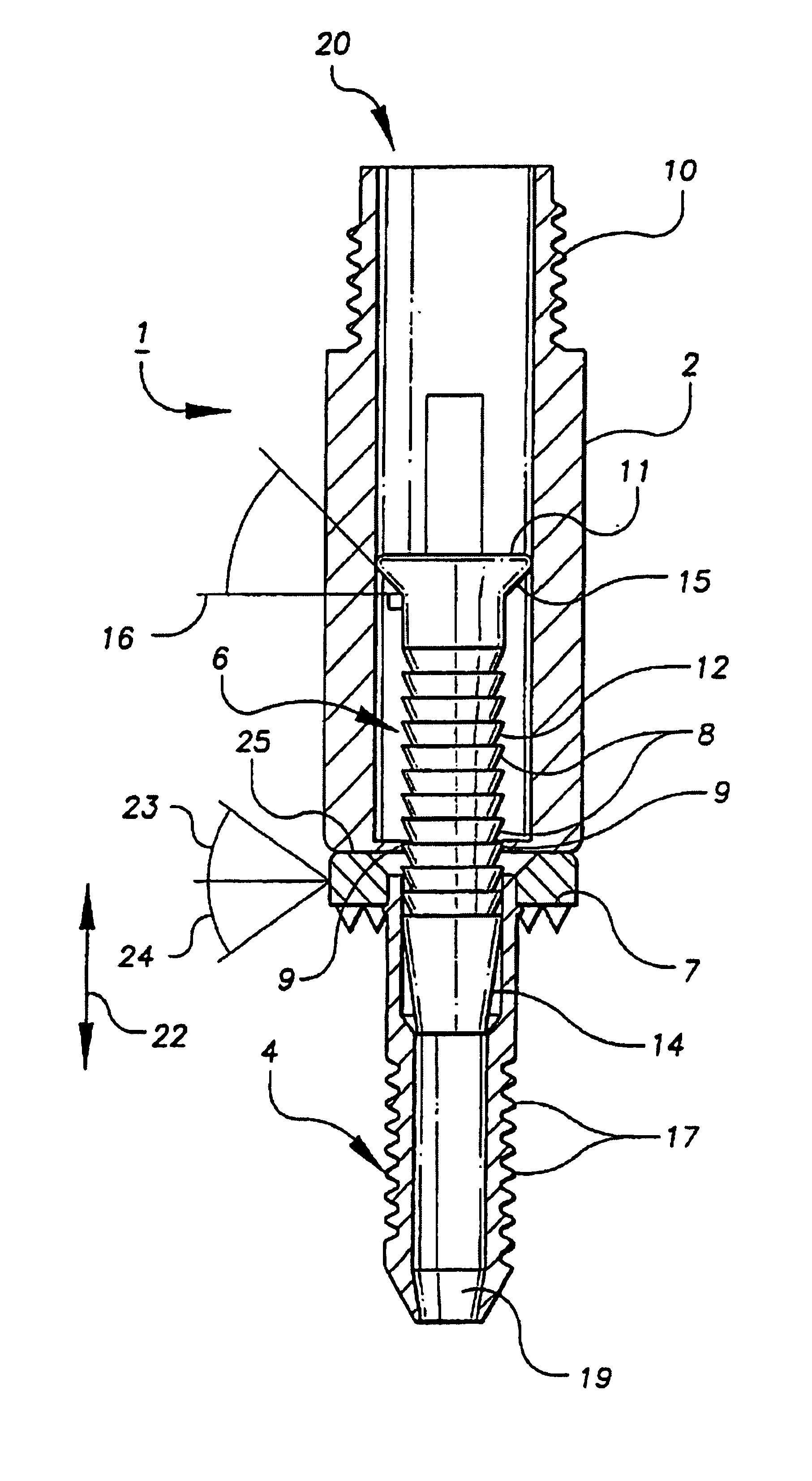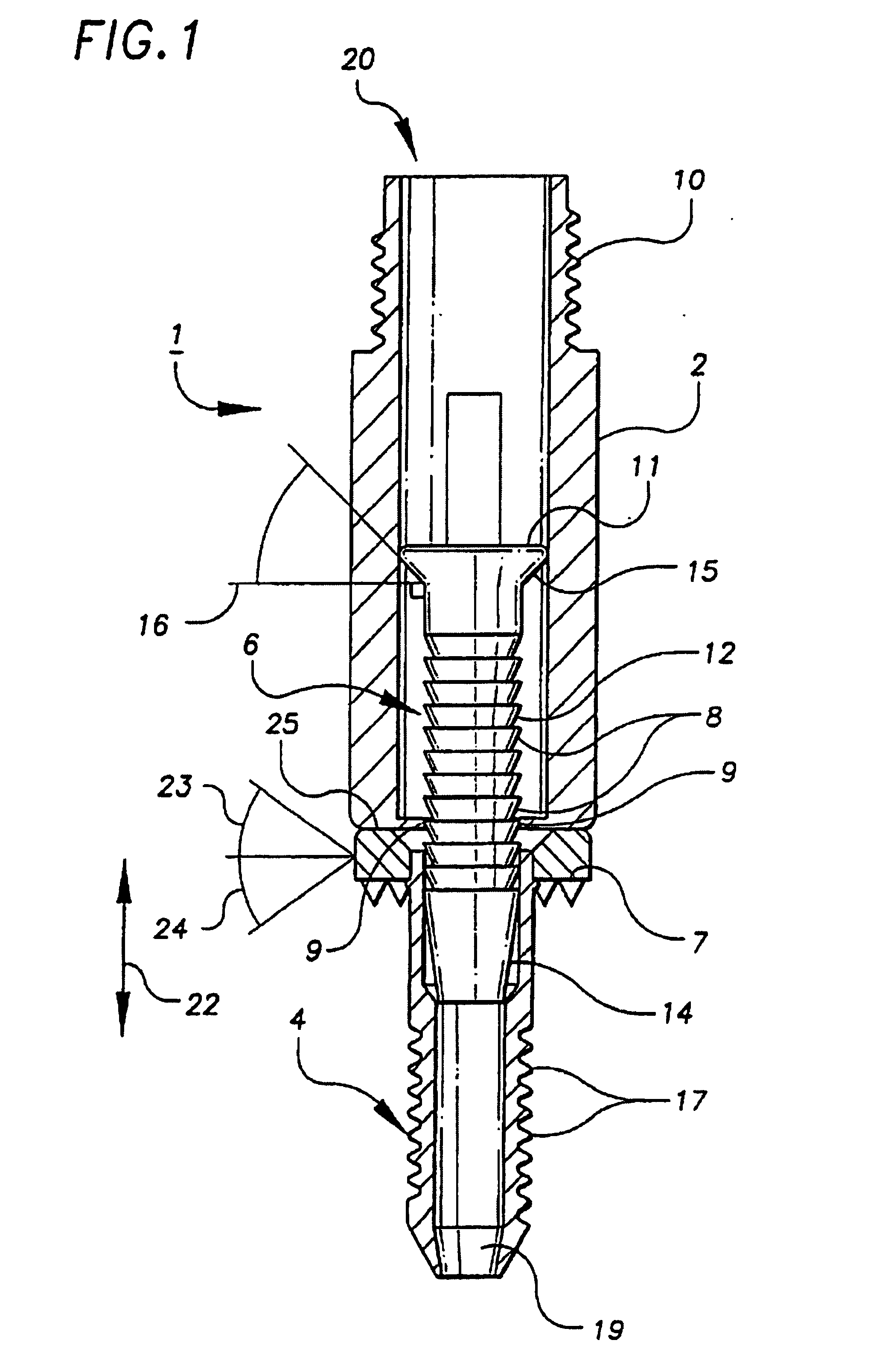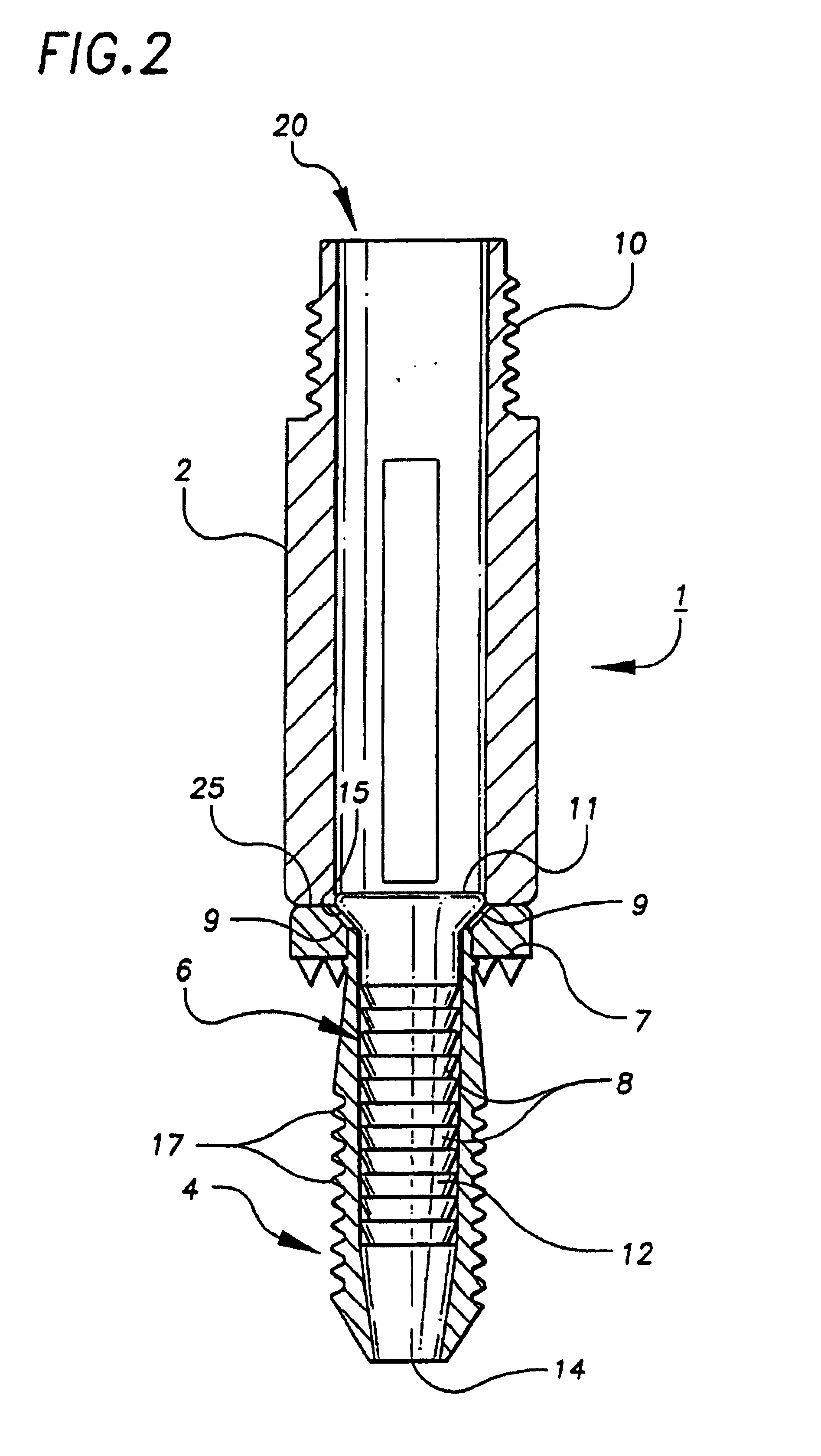Bone anchor and deployment device therefor
a deployment device and anchor technology, applied in the field of bone anchors, can solve the problems of hairline fractures, many deficiencies of the type of anchors, and easy dislocation of the anchor, so as to reduce the chance of the anchor dislocation, enhance the fixation of the tissue, and increase the interference strength
- Summary
- Abstract
- Description
- Claims
- Application Information
AI Technical Summary
Benefits of technology
Problems solved by technology
Method used
Image
Examples
Embodiment Construction
[0031]FIGS. 1 and 2 are close-up, cut-away views of a bone anchor according to the present invention. As shown in FIG. 1, bone anchor 1 includes housing 2, expandable 5 sleeve 4, rivet 6, floating washer 7, breakable flanges 9, and threading 10. In preferred embodiments of the invention, some or all of these components are made of a bioabsorbable material which dissolves in a patient's body over a period of time leaving little or no trace. Alternatively, bone anchor 1 may be made of other biocompatible materials, such as conventional plastics or the like.
[0032]Rivet 6 is comprised of head 11, elongate body 12, tapered tip 14, and a centerbore (not shown) running therethrough. Head 11 is located at the proximal end of rivet 6 and has a diameter which is greater than that of either elongate body 12 or tapered tip 14. Head 11 also includes undersurface 15. Undersurface 15 can be formed with a spherical radius or, alternatively, angled relative to a longitudinal axis of the elongate bod...
PUM
 Login to View More
Login to View More Abstract
Description
Claims
Application Information
 Login to View More
Login to View More - R&D
- Intellectual Property
- Life Sciences
- Materials
- Tech Scout
- Unparalleled Data Quality
- Higher Quality Content
- 60% Fewer Hallucinations
Browse by: Latest US Patents, China's latest patents, Technical Efficacy Thesaurus, Application Domain, Technology Topic, Popular Technical Reports.
© 2025 PatSnap. All rights reserved.Legal|Privacy policy|Modern Slavery Act Transparency Statement|Sitemap|About US| Contact US: help@patsnap.com



